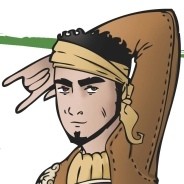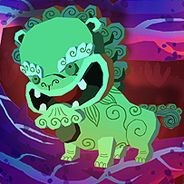Ответы на вопрос:
origins of alaska’s native groupsno one knows exactly when people first found the land that would be called alaska.
some anthropologists believe that people migrated from asia to north america as long as 40,000 years ago. others argue it was as recent as 15,000 years ago.
whenever, the consensus is that they came from asia by way of a northern land bridge that once connected siberia and alaska.
that land bridge, now recalled as beringia, was the first gateway to alaska. but these first visitors were hardly tourists intent on exploring new worlds. rather they were simply pursuing their subsistence way of life as they followed great herds of grazing mammals across the grassy tundra and gentle steppes of beringia.
they came sporadically through many millennia.. in waves of different ethnic backgrounds/generations of people and animals..hunters and hunted. as the ice age drew to an end and the seas claimed the land, these people moved to higher and drier places--the land that, as the continents drifted apart, would become alaska.
some groups settled in the arctic. others traversed the mountain passes to other parts of alaska. while still others migrated through alaska, continuing on to distant lands--perhaps as far as south america!
those who made alaska their permanent home make up the state’s four major anthropological group: eskimos, aleuts, athabascans, and northwest coast indians. while all four groups shared certain basic similarities--all hunted, fished and gathered food--they developed distinctive cultures and sets of skills.
the eskimos: flexible residents of the arctic the eskimos were primarily a coastal people, setting along the shores of the arctic and bering seas.
for millennia they lived a simple, subsistence life--much as they still do today--by harvesting the fish and mammals of the seas, the fruits and game of the land. somehow they learned how to thrive despite the demanding conditions of the arctic.
their sense of direction was keen, almost uncanny. travelling in a straight line, sometimes through snowstorms and whiteouts, they found their way around the mostly featureless terrain by noting wind direction, the position of the stars, the shape and size of a snowdrift.
and they were resourceful. in a land where the summer sun stays at eye-level for weeks on end, never setting below the horizon, the eskimos fashioned the first sun-visor--which also doubled as a snowmask to protect their eyes from the wind-driven snow!
the athabascans: nomads of the interior like the eskimos, the athabasca’s were skilful hunters, but they depended more on large land mammals for their subsistence--tracking moose and migrating caribou. when it came to fishing, the athabascans were absolutely ingenious, snaring fish with hooks, lures, traps and nets that are the fascination of modern day anglers who visit their camps.
generally nomadic, they lived in small, simply organized bands of a few families, and whenever possible pitched their camps in the sheltered white spruce forests of the interior. some adventurous tribes, however, wandered all the way to the southwest united states to become kin to the navajos and apaches.
aleuts: born of the sea for the aleuts, life centred around the sea as they distributed themselves among the 70-some islands in the aleutian chain across the north pacific. life here was somewhat more benign that in the arctic, though wind storms were sometimes strong enough to blow rocks around!
since their food supply was rich, varied and readily available, the aleuts had time to develop a complex culture. evidence indicates that they practiced surgery and that their elaborate burial rituals included embalming. instruments utensils, even their boats (baidars) were made with amazing beauty and exact symmetry. and everything was fashioned for a specific purpose--the aleuts used 30 different kinds of harpoon heads for different species of game!
skilled navigators and sailors, the aleuts had the dubious distinction of being the first to encounter the white fur traders who took them as slaves to harvest the fur seals in the pribilofs.
the northwest coast indians: high society of alaska’s southeast the milder, more temperate climate and an unlimited supply of salmon and other seafood’s enabled the northwest coast indians to evolve a way of life quite different from the eskimos, aleuts and athabascans.
they settled in year-round permanent villages, took slaves, gave lavish potlatches, and lived their lives according to the strict rules, rituals, and regulations of their respective clans. their artwork was nothing less than blankets, finely woven cedarbark and spruceroot baskets magnificent totem creations.
crowded, colorful, scary, impressive, atmospheric, were stunning, colorful.
Реши свою проблему, спроси otvet5GPT
-
Быстро
Мгновенный ответ на твой вопрос -
Точно
Бот обладает знаниями во всех сферах -
Бесплатно
Задай вопрос и получи ответ бесплатно

Популярно: Английский язык
-
Divide these words in the snake . write these words using a comma and gaps....
 lilia2502122.01.2021 00:49
lilia2502122.01.2021 00:49 -
Can you identify the animal which does not belong to the group? salmon...
 кратос231520.08.2021 16:44
кратос231520.08.2021 16:44 -
Сделать краткий пересказ этого текста на : christmas is christian holiday...
 Онегин133707.05.2021 18:21
Онегин133707.05.2021 18:21 -
Когда говорят he is а когда просто he например: it was a comedy it или...
 gggg13215.04.2021 09:40
gggg13215.04.2021 09:40 -
8. choose the right variant. выберите правильный вариант. 1. he was born...
 thenotoriioussmma31.05.2022 02:17
thenotoriioussmma31.05.2022 02:17 -
Как перевести на ? у нас в понедельник 6 уроков. в 8.30 урок французского...
 НикаКотикТян25.01.2021 06:57
НикаКотикТян25.01.2021 06:57 -
How many children did the followiing activities?...
 bananxhik30.04.2023 06:06
bananxhik30.04.2023 06:06 -
Say the numbers. write the odd one out in each group....
 riborg25000000004.09.2020 22:14
riborg25000000004.09.2020 22:14 -
Почему важно следить за здоровьем? и сделайте перевод на...
 Даниюша322317.12.2020 23:47
Даниюша322317.12.2020 23:47 -
Remember and compare! knowledge is power! knowledge is light! little knowledge...
 Лобан124.10.2021 14:11
Лобан124.10.2021 14:11

Есть вопросы?
-
Как otvet5GPT работает?
otvet5GPT использует большую языковую модель вместе с базой данных GPT для обеспечения высококачественных образовательных результатов. otvet5GPT действует как доступный академический ресурс вне класса. -
Сколько это стоит?
Проект находиться на стадии тестирования и все услуги бесплатны. -
Могу ли я использовать otvet5GPT в школе?
Конечно! Нейросеть может помочь вам делать конспекты лекций, придумывать идеи в классе и многое другое! -
В чем отличия от ChatGPT?
otvet5GPT черпает академические источники из собственной базы данных и предназначен специально для студентов. otvet5GPT также адаптируется к вашему стилю письма, предоставляя ряд образовательных инструментов, предназначенных для улучшения обучения.
